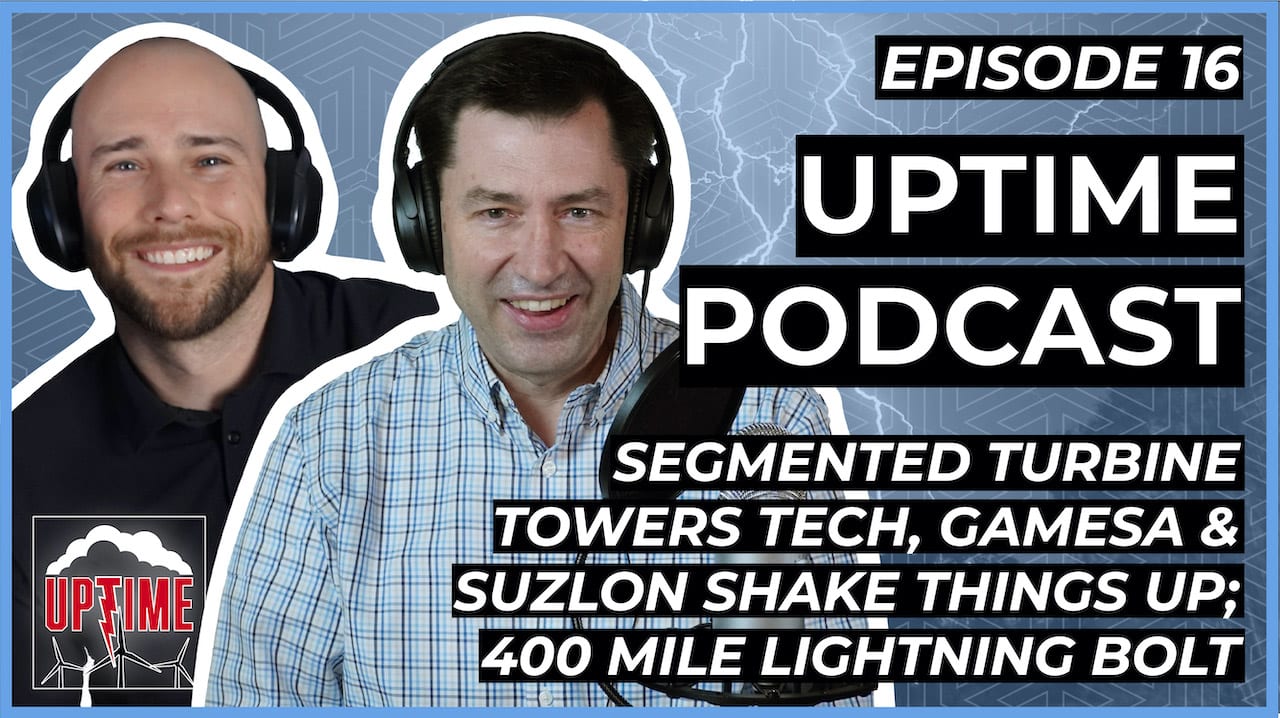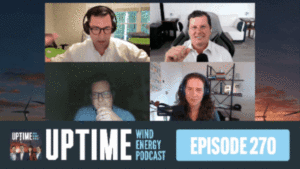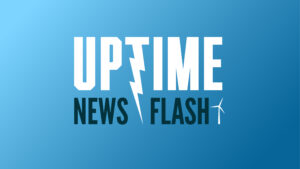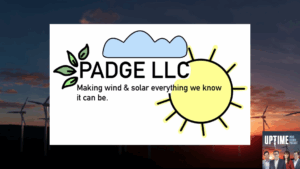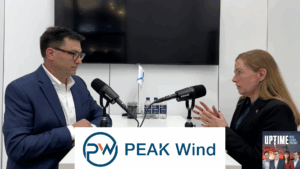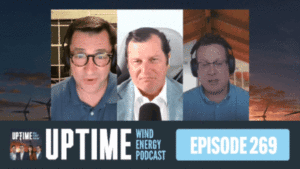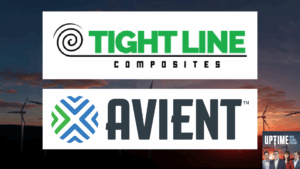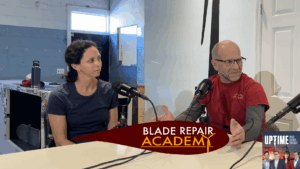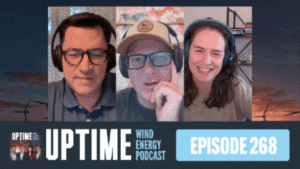Are segmented turbine towers the future as wind turbines climb higher and higher? Siemens Gamesa named a new CEO recently, and Suzlon has restructured–will the business survive? Some incredible electric storms occurred recently, including a 1.3 billion volt storm in South Africa and a 400 mile long lightning bolt across Brazil.
Learn more about Weather Guard Lightning Tech’s StrikeTape Wind Turbine LPS retrofit. Follow the show on YouTube, Twitter, Linkedin and visit Weather Guard on the web. Have a question we can answer on the Uptime Wind Energy Podcast? Email us!
Podcast: Play in new window | Download
Full Transcript: EP16 – Segmented Turbine Towers; Gamesa and Suzlon Shake Things Up; 400 mile Lightning Bolt?
Allen Hall: Welcome back I’m Allen hall.
Dan: This is the uptime podcast where we talk about wind energy engineering, lightning protection, and ways to keep your wind turbines running.
Allen Hall: Great boy, busy weekend wind turbines again. COVID-19 is having a, a, an effect on everything. I’m just trying to follow. All the news is coming in. It’s almost difficult to keep track of all the changes that are happening now in the wind turbine industry. So, uh, let’s get to it. I mean, Big big, big changes all over the place.
Uh, you know, we’re seeing all kinds of push towards, uh, offshore wind turbines. And I think that’s driving a lot of the management changes that are happening. It’s also causing a lot of restructuring to happen and boil boy, uh, talk about chaotic. We’re in it right now.
Dan: Yeah. So we’re going to jump into news in a second, but, so let’s talk about this new piece of tech.
That is kind of an interesting, so we talked about concrete, um, wind turban towers, and the last couple episodes, specifically the three D printing, but. Now, they’re talking a little bit about segmented wind turbine towers as being potentially the lowest cost alternative for when they get really, really tall, which is obviously like in everyone’s future.
So we’re talking about how hub Heights above 100 meters. Um, well, well above that more like 200, 200 plus meters, but obviously there’s a thousand meters. Yeah. Well, there’s a big problem when yeah. You know, they get above a hundred meters because transportation gets really difficult. So. Um, what do you think of these segmented?
So the segmented tower technology is essentially, you know, having segments where you’re going to bolt them together and they’re going to be easier to ship and you’ve got to assemble them, but there’s going to be much more engineering and. And fasteners and a lot of, a lot of different, like I said, engineering to make these work, but how do you feel about this?
Is it going to be viable? Is that make the most sense?
Allen Hall: Makes most sense? Cause you can be able to transport it. The biggest problem in wind turbines right now is the ability to transport from factory to site and. That’s why you see this big push of factories getting shoved toward the Schwar lights, because the wind turbines are getting so much bigger that they need to be going by boat no longer can we just move them on truck?
And when that happens, yeah. You got to think of ways that you can start moving these things on truck reasonably because the weights go up too. So you have a kind of a combinational problem of the sizes get big and the weights get so heavy that they can’t really put them on a road. So you’ve got to figure out ways to reduce.
The overall size of each of the pieces and then okay. And get them on a truck or a ship. So it’s, it’s a, a real, real unique engineering problem. Uh, just seeing this articles, more recent articles about, uh, building a segments, like the one up in Sweden where they’re building it out of wood, which means they’re building it in segments.
And then now we’re talking about. Basically building metal sections that get bolted together, much like most other metal buildings and structures in the world are built. It’s sort of about time, you know what? We’re going to get to the size where we’re going to need a bolt things together. Good.
Dan: Yeah. So apparently the U S right now doesn’t really have a commercially viable solution for steel towers above 140 meters.
So that’s where this starts to come in. And that looks like one company is going to be offering this, but yeah, I mean that’s skin and really, really tall. So, I mean, what are some of the engineering challenges of, of things when they get that high? Cause obviously the base has got to get wider and wider as they go up.
Um, but what other engines and hearing difficulties do you foresee with all this.
Allen Hall: Well, it’s just the weight, making sure that the ground can handle the weight you brought to put onto it and how big the pad is. You’re going to pour so that this turbine doesn’t tip over. And then, uh, once that’s not easy, by the way.
So there are places you will not be able to put some of these wind turbines cause the ground can’t support it. And once you do find that land and you can make that foundation build a foundation in it, then you got to figure out how to get this thing up and moving. When you start building segmented, large segmented pieces of metal with steel, what we’re talking about here, uh, the key to all this is fasteners.
Making sure you have strong enough fasteners and that the fascists were installed properly and the whole sizes are right. And that the fasteners are tightened and then remain tightened for the lifetime. That’s where that’s, where you can run into trouble on any, uh, construction project where, uh, fasteners are used, because if it’s a wrong fastener at the faster, isn’t the right, hadn’t had the right strength or the whole is, or misaligns or for a myriad of different reasons.
There’s things can go wrong on fasteners. That’s that’s where the trouble lies. Cause if you’re, if you’re highly loading on which I’m sure we’re going to be doing highly loading fasteners and these. Construction designs. We’ve gotta be really careful that we’re doing that right. And we’re, we’re actually getting the fasters installed properly.
That’s where the weak spots going to be. And it’s even the weak spot today. You see a lot of, uh, uh, uh, talk and, and recertification of bolt tightening. On wind turbines, because as things settle, they tend, they get loose as everything kind of gets to a normal state, even though your car. And it says anything on your car or an airplane or motorcycle, you try it for a while.
You don’t, you find a couple of nuts solution, like, Hmm. That’s interesting.
Dan: Yeah. It’s
Allen Hall: terrifying to happen. Yeah, right? Like your wheel wheel lugs that just go around and check those once in awhile. Yeah. Same thing. This is going to be it’s it’s going to be a technical challenge. Cause you think about the number of turbines.
They are going to go up over the next several years and how massive they’re going to be. You need trained people to go do that. That’s not a rookie thing. Like someone like me can just walk up. So banging and bolts and tightening, um, and you need some training there to make sure it’s done. Right. And uh, so there’s going to be some highly.
Paid skilled jobs coming up in the future, building these segmented winter towers.
Dan: Yeah. I mean, that’s, it’s interesting. And you start to wonder how high they’re going to go, because they’re just trying to reach better wind. But at the end of the day, I mean, at what point would you. I think they’re going to start to interfere with aircraft or is there like a, going to be an upward limit where they’re going to, or is that not really an issue going forward?
Allen Hall: Well, they sort of do right now in the fact that, uh, there’s navigation, lights, red lights that are put on top of them when they’re around anywhere near an airport, so that airplanes don’t fly into them. And I remember flying around Kansas. This is Sue. Oh, it’s probably 20 years ago now. And there are wind back in Kansas 20 years ago.
And same thing for like antenna towers. It’s the same thing as the antenna towers. And until you get to about antenna tower Heights, that’s, that’s where the limits are going to start to be drawn. I think, but if and UK were, and a lot of other European countries where they’re making a wind a priority, Then what you do to the earth planes.
You just tell them not to fly, let the fly on those areas. Just treat them as mountains. That’s essentially what they’ll do is treat them like high terrain. And so you don’t fall around them. What, and they’ll Mark them off. Yeah. And then stays world. You can do that. Cause it’s, there’s so much computer technology and aircraft where they, where things are marked like a synthetic.
Uh, vision systems and all those things that are in aircraft today simulates the ground and every antenna tower and wind turbine show up in those things. So it isn’t like the pilots don’t know they will, they will. So I don’t, I don’t really don’t know if there’s a really a peak limit besides when we start to get to really what the strength and materials can handle.
That’s going to be found out pretty fast because Siemens and GE and everybody for that matter and fastest or driving towards larger and larger. Turbines, because it just makes financial sense to go do that. And at some point we’re going to reach that limit and we’ll know when we hit it, because things will start breaking.
So that’s usually how we figure it out.
Dan: Yeah. And I mean, do you think that they might use this technology with like a hybrid concrete base or. I assume like hybrid models always seem like the best way to go. Cause he ended up getting the best of obviously both, both styles or whatever. I mean, is that right?
What you think as far as, uh, yeah, longevity,
Allen Hall: uh, you know, longevity is a different thing. Uh, cost and efficiency. Are usually hybrids for most anything, uh, because, uh, every ever there’s always trade offs in every piece part that you’re going to build. And as an engineering side, you’re looking at the cost to make the part and what the material costs is, what the, if you’re doing some special machining and adds up and do you really want to put that much?
Expensive to a party. You wanna just make it out of something cheaper? Yeah. That’s going to happen all the time. And, and S and what seems to happen is this really unique cycle of one engineering team will put out, uh, what they consider the, the forefront of technology. And then that’ll get batted around a little bit.
And some people adapt to it. Some people won’t and then it gets to the next stage. So it’s just like this constant evolution of engineering design based on success of the previous designs. So if it proves itself out, everybody is start running down that pathway because they’re going to do the math and figure out like, okay, yeah, these guys actually did their homework or they got some sort of unique twist or thought process on this that we didn’t think about before.
And then. Everybody rushes to fill the void. And that’s how we get to, you know, when terms that are 15 megawatts and up is that we’re going to start figuring out how to do those things. Somebody is going to start breaking some barriers, more traffic this week seen much larger numbers in wind turbines.
You’re like, man, is that even possible? Maybe, maybe. And we’re going to need a whole bunch of engineers to figure it out. And a bunch of technicians to make these things happen. I just don’t know if anybody’s got a really solid solution underpinned in part by where the winter burns are located and the cost of materials locally, because these things are getting so massive.
That you’re practically building them onsite. You’re going to end up putting a factory somewhere near where these farms are gonna be, uh, because just can’t ship anything anymore.
Dan: So we’re going to transition into our new segment here. So a couple of things coming out of a Siemens Gamesa, or what’s soon to be named a Gamesa energy. So obviously they have a new CEO. That’s about a couple of weeks now. They’ve, uh, replaced Marcus tack with, um, someone from within the company. Andreas Nowan who’s been, he was the head of the offshore divisions now promoted to CEO.
So, and Siemens Gamesa is looking for, I guess, a big change as they’ve had some struggles in the, in the recent, uh, financial sector. But, um, how do you feel about that? This move and what do you see from, from Siemens Gamesa? Moving forward?
Allen Hall: Well, I think the, the word on the street about Siemens Gamesa has been for the last couple of years is that they’ve really struggled to get new product out.
And some of the new sites that had a particularly on shore or problematic for them. And there’s so many pieces to being successful and a wind turbine company. Cause it’s not about just. Building the wind turbine. And it’s about getting it to the location, getting it up and running. And you’re sort of involved in all that in versus like in an automotive sector where you make the car and once it goes out the door, you sell the car and then you hope you never see it again.
That’s not how the winter market works. It’s much more of an industrial thing. Like building a building, right. You build a building in the hope that you get tenants and until you rent that thing out or lease it all out, you’re still on the hook for it. Kind of like that. Uh, and so if you think about it, you have such a breadth of knowledge that you have to deal with.
Um, markets, uh, yeah. Of construction, manufacturing, unions, shipping, uh, contract negotiations, sales, uh, dealing with. Uh, different countries and regulations around the world. You’re getting bombarded from all sides. That’s a very unique skill set for any CEO to have. And I don’t know if you can really even be successful in that role, the way it is defined today, because you, what you’re seeing is this sort of consolidation in the marketplace where the wind turbine companies, 20 years ago, there’s a whole lot more of them and they’re kind of spread around a lot.
There’s been a consolidation in the industry. And now that’s forced a lot of responsibility on the sort of the upper levels of the management chain to try to deal with this plethora of issues and which they may not be experts in based on what their previous background was. And I don’t. No, no. You know, it almost, when you see the, the, the shifting, uh, the shuffling of management chairs in any large organization like that, you say, well, What’s going to change, right?
Yeah. I don’t know what’s going to change beats me. No one said it. And which is the, one of the most frustrating things about these news releases like, Oh, we’ve replaced CTO, such and such with this new person who came up through marketing, blah, blah, blah, blah, blah. Oh, that’s awesome. Right. But why is that going to, why is that going to help?
I’m curious how it’s going to change the fact that you’re getting crunched on price and you’ve got global competitors and you’ve got this COVID-19 thing happened and all the other things that are going on, right. What’s this new person going to bring to the table that the last one didn’t I don’t, I don’t know.
And as sort of a purveyor of large corporations, because we, you know, we deal with aircraft and, and our company do with aircraft and winter manufacturers all the time. Uh, the, each have. I will say that each have their own personality. I really don’t see a lot of change. And those personalities and the corporate personality based on the CEO, you haven’t seen a lot of change.
Like you can’t, you can’t name the last five, Boeing CEOs, you couldn’t name the last, uh, Vestas CEOs, right? You just don’t know. Because they each have their own corner. Corporate personality is based upon all kinds of factors and it’s hard for one person to really drive change. And when you do see someone like that, they really stand out and, um, I I’m struggling to think that any kind of swap out in a management write down is going to make a huge difference on stock price.
Dan: Yeah. Well, and you start to see this with the, uh, the sports world as well. You know, whether it’s baseball or football, when you know the team’s been running poorly. They, uh, you know, the manager’s got to go like, he’s the scapegoat and the head’s got a roll. Yep. It’s often not clear, so right. We’ve got a new manager.
Well, we still have all the same players and they were the ones on the field, you know, like these corporations still have their same 1500 employees plus or minus and all the systems that are in place. I mean, you can’t just uproot it and throw it all away. And they’re responsible in large part for, you know, getting the work done and turning up and getting products out to market.
So. Yeah. You wonder at times whether it’s just like, look, it’s just been bad for too long. Like you just got to go, like, it just has to happen. It’s almost like it’s ceremonial. Right. And, and not as much because they’re especially times, you know, you and I are both baseball fans. There are just times when you’re like, I just don’t feel like this is the manager’s fault.
I mean, just like his players just kinda stunk, you know? And, and what was his personality he going to do? And what was a lineup change gonna do? When they just weren’t getting the job done on the field, you know, and I think there’s some, probably some, some analog there to the, uh, the business world, not completely because the CEO to come in and say, Hey, we’re steering the ship in a completely different direction.
And we’re allocating money in the wrong places. And we’ve got systems that are broken like me, you know, I’m sure a lot more that can change by then, like just a sports team in a year. But, but yeah, I’m with you. It’s, it’s hard to know what I’m. Whether it’s just a ceremonial head, head change had rolling, or if it’s really going to be, or how long they expect for it to take two.
I think the other thing, cause sometimes you come in like, Hey, we need major three, four, five years where we get where we want to go around the, just like this is going to turn, turn around right away. Right? Yeah. So speaking of which Susan alone has successfully completed their debt restructuring. Um, Sally, you’re, you’re pretty optimistic about this.
Allen Hall: I think they’re going to come out of it just fine. Um, they have technology, they have, uh, uh, they have market demand, you know, sales. Fixes everything and just got to sell it. Just got to sell. And I think they’re in a unique position to sell because my gut tells me and what market forces are telling me is that they’ll have a financial advantage on some level, just the costs, the cost to produce.
Wind turbines in their marketplace. It should be less so as long as they don’t get into some sort of a trade war. And it sounds like, like India, China are starting to get into a little bit of a trade war, which I’m not sure. It says a lot is super happy about right now. Uh, they got it. They’re going to be able to stay in the marketplace.
And as, as there are just fewer players. At some point, it’s just like, uh, the okay. Government this week buying a satellite company. Like what, what in the world is going on there? Yeah. At some point we get to the place where they companies become part of the national infrastructure and they can’t be lost.
And the governments. We’ll pour money into them to keep them alive. And we’ve seen that with Airbus. We saw it with Boeing on the aircraft side. We’ve seen it with other aircraft manufacturers over time. Uh we’ve we’ve seen it in wind turbines, uh, in the States and in Europe for awhile, I don’t see that going away.
So if you happen to be though the lone player in your country and, and some politician or a group of politicians or a party thinks as to the vital national interest to have you there. It will be possible because at some point it’s all about money and loans and being able to take out the loans. So you keep the thing running.
I think they’re going to be okay. Their stock price has bounced around a lot lately seen, starting to gain a little bit of a firmer ground at least this week. And again, we’ll get back to that culture thing. Do they have the culture in place to be successful going forward? They haven’t in the past, but maybe, I mean, they will now with a little more cash because in lieu of sales, you know, sales is about cash.
So getting cash infusions can sometimes get you over the hurdle, but you still have to do the hard work. I’m optimistic and hopefully they succeed because they do have
Dan: All right. So we’re going to jump into our last segment here. We’re going to talk a little bit about just some interesting lightening news. So Alan, there was this supercharged quote, unquote thunderstorm reaching 1.3 billion volts. Uh, just this earlier this spring, um, So, what is, where does that rank, I mean, I think you’re going to have to kind of start from scratch and give people a little bit of a, uh, a primer on how much voltages in a typical storm.
And what does the 1.3 billion mean? I mean, the photo of this is crazy over it, so it was over South Africa.
Allen Hall: Since South Africa. Right. Um, so it all depends on how much, how large the storm cell is and how much charge is stored into the cloud. That’s what it comes down to because it goes voltages. It’s a potential difference between two things.
And, and no, I think that the 1.3 billion volts sort of an estimate based on some other things, but, uh, When you have storms of that size, you have real problems. Uh, just because when those storms start to discharge, they’re going to discharge violently and usually at high amplitudes. Uh, so from a wind turbans perspective, particularly someplace like South Africa, uh, where.
Or in any part of the world, that’s relatively flat. It doesn’t bend where it is. Um, you know, wind turbines are typically the highest object around for the most part. And so when you get wind turbines installed in an environment like the West coast, Japan, or on the mountain tops of Italy, you tend to take a lot of big strikes and we’re in, you know, it’s.
2020. And we’re just figuring out like thunderstorms have a lot of potential in them. Yeah. Like didn’t we know that before, uh, do I have to put a number Miranda to actually feel good about myself? I don’t think so. I think I know that based on the destruction that’s happened over the last 200 years of undocumented, the last 200 years, we know thunderstorms are very violent things and I personal care what the voltage is as much as.
How much destruction and what we need to do to protect ourselves and our, particularly our electrical grid from these kinds of big discharges, because in a similar note, there was a discussion about the largest lightning discharge, which seemed to happen. Was it Donald Brazil? I think that’s where it was, um, where it was about 400 miles.
700 kilometers of a Lake, any discharge. And if they had some in the Midwest in the United States should have been fairly large, like the size of States like this, like the size of Oklahoma. Um, I think Argentina’s had a pretty large strike there in terms of size, just because we have satellites that can, can measure these things.
Now you can actually. Sit down and sit there and go, Oh yeah, it’s actually that long. Um, again, it’s one of those values that probably doesn’t make any who cares. Right. And the winter term is in the wind term is it probably does matter because what we’re learning now and what we’ve learned over the last couple of years, it’s like, It’s not like you have one lightning strike and then the storm builds up charge again.
And you have another lightning strike. It’s not sort of the cyclical charge discharge cycle that thunderstorms are involved with in terms of lightening strikes. That’s not the case at all. If you think about these storms and the size of these storms, there’s an electrical charge, distributed all over them.
So if the storm is the size of, I say the storm is 300 miles across, that means there’s charged 300 miles across. That means a discharge somewhere in that story. And probably cause a cascade of other discharge just to happen in those, in those clouds and in the winter term and industry. What we’re seeing is that one discharge is causing lightened lightning strikes to a bunch of wind turbines.
So it’s not even necessarily that the. The wind turbines are taking that first strike as, as much as there may be taking subsequent strikes from a discharge that happened a hundred miles away. That is a game changer in terms of what we think about lightening protection on wind turbines totally changes the whole event.
Essentially it goes like this. We’re going to get struck off heck of a lot more than we thought we are. And I know, I know they’ve had these little magnetic car readers in the wind turbines for a long time that measure the peak amplitude of lightning strikes. But didn’t tell you the quantity necessarily the quantity of lightning strikes.
And now that we’re instrumenting wind turbines will kind of give them a better sense, like, okay, These warm Trowbridge against struck quite a bit. Maybe not with huge lightning strikes, but they’re getting struck quite often. And if we’re designing them, are we designing a property for that environment?
Now I haven’t seen there. Hasn’t been a lot of papers come out about, um, the results of these instrumented wind turbines, which. To me is mind blowing, like, come on, we got to get to the point where some of this data is just general knowledge and that we’re helping the industry. It’s sort of like tests on the patent thing or Tesla just, you know, Eli must’ve said, I don’t care about the patents.
Everybody can use them. That’s the same thing in lightening protection too. When we get data, we need to be able to share that data so that. We have a better marketplace because wind turbines getting struck and going out of service hurts the wind turbine industry. It doesn’t hurt a particular manufacturer necessarily if it gives the whole industry, a black eye and we, and we have to think slightly bigger than that right now, because if we really want to have some sort of green energy source, reliable green energy source, then we need to know what those lightning strikes look like.
And how are we going to should be designing for them. All
Dan: right. Well, we’re going to wrap up today’s episode of uptime. If you’re new to the show. Welcome. If you’re a regular here, thank you for your continued support. Please subscribe to the show and leave a review on iTunes, Spotify, or wherever you listen to podcasts.



